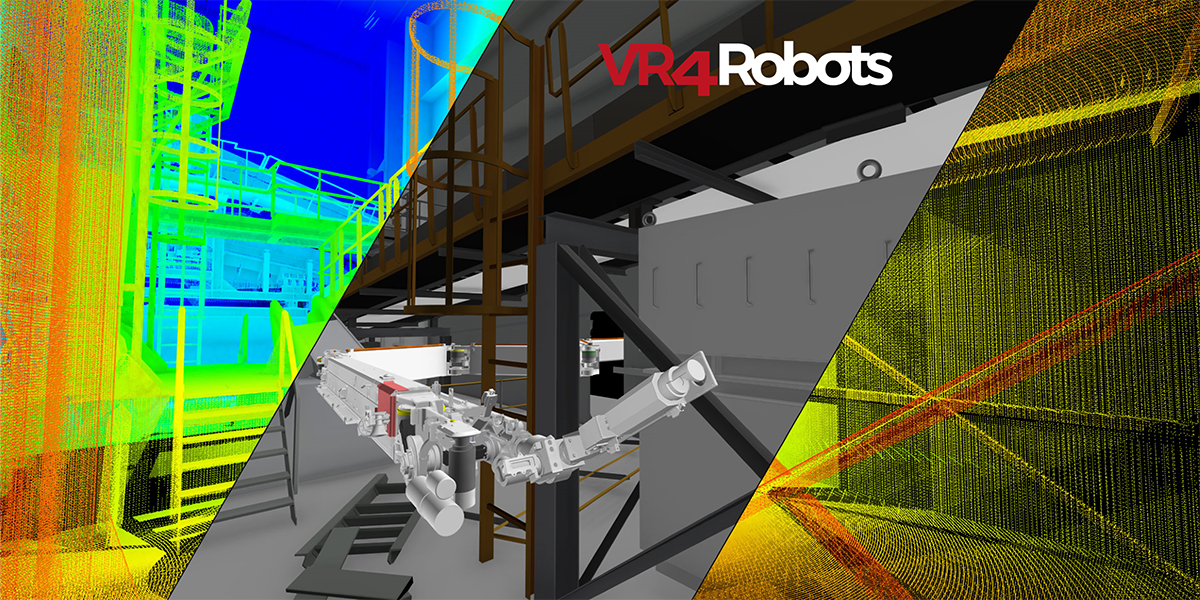Risk Mitigation Through Safe Test Creation

Visualization and simulation software is a safe and cost-effective means of testing expensive robotic equipment in complex environments. Using detailed data inputs, it’s possible to create reliable and fully-functional virtual models of robots and their surroundings.
Replicating real-world physics, these simulations provide the ultimate testing ground for remote handling operations at every stage of a robot’s lifecycle, from the design phase right through to day-to-day operations. In other words, they enable end-to-end risk mitigation through safe test creation.
How It Works
Both the robot and the environment need to be simulated as accurately as possible. When the environment in which a robot operates is relatively new, every part of it can be known and accounted for in a virtual model – down to the smallest mechanism. This means that what’s seen in virtual reality (VR) is as close to reality as possible, which is ideal for a realistic test environment. Sometimes the operational environment is unknown or damaged. A virtual representation can then be reconstructed based on scan data of the environment.
Creating a virtual robot model begins with design data. Once the real robot is built, the interactive model can be enhanced by scan data of the manufactured equipment. That’s because the produced object is almost always a slightly different shape to the designed one. By scanning the actual object and extracting the data, any differences in the real-world object are easily accommodated in the virtual environment to ensure full reliability. This is of high importance when planning and validating movements in confined spaces.
Sensor data can also be used to position components within the robotic environment. However, our solution for preparing and validating remote operations – VR4Robots – is not dependent on sensor data. This is useful when there are no sensors or, for whatever reason, they’re simply not working. VR4Robots can accurately predict the robot position based on input from the control system combined with accurate physics simulation, such as the simulation of the drooping effect of an extended arm. Using the data sent to a robot alongside joint positions, it’s possible to position the robot as it is in real life. This means, no measurements are required to accurately predict the precise location of a piece of equipment.
Test For Success
Our simulators incorporate real-world physics to enable companies to safely test their robots. Simulation accurately replicates cause and effect, such as the strain caused by lifting a heavy load. It’s then possible to use this data to help inform real-world decision-making in respect of safety, such as clearance heights. Put simply, if something’s not possible in VR, it won’t be possible in reality.
With so many variables in play, visualisation and simulation software can help operators identify and eliminate all known issues, and therefore greatly reduce risk. From feasibility studies to force measurements, a simulator enables companies to road test complex equipment in a safe, virtual environment where there is no threat to life, and no risk of damage to the actual equipment. For that reason, it provides the ideal opportunity to test out remote handling activities before committing to them in the real-world.
Simulations help operators get the minutest of details right – practical details which can make or break an operation. This includes things like determining the ideal location of a tool so that it is always within reach, or discovering that once a certain task is completed, a latch will become inaccessible.
Mitigate Risk With Tree C
Highly-accurate virtual models and environments help companies to surface and address all known issues before a remote handling operation begins. So when the time comes to get started in the real-world, they can focus their resources on the unforeseen challenges that arise during the operation itself.
Risk mitigation in a safe test environment smooths the path to successful remote handling operations. There’s no question that vetting the known quantities beforehand, using VR, helps to mitigate risks. It can also be used during operations to test out planned operations and see their consequences on both the equipment and its environment. For instance, deflections and changes to the shape of a robotic arm can be predicted ahead of time.
It goes without saying that the cost of implementing changes to a piece of robotic machinery becomes more costly and time-consuming the deeper you go in the design and development process. Using visualization and simulation software during the earliest design stages, it’s possible to eliminate risks as they arise, and cut the cost of making alterations further down the line.
Tree C’s visualization and simulation technology supports engineers with advanced physics simulations and offers a safe test environment for equipment and control systems. Find out how.